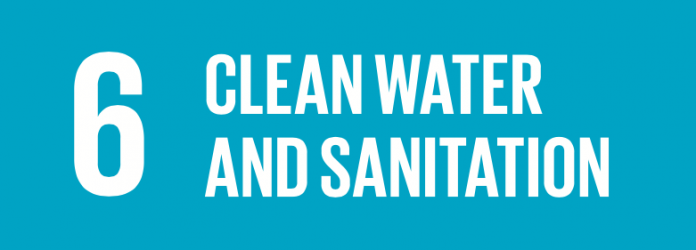By Tom Williams*
Back in 2004, the founders of Facebook launched their service to a select group of university students. Fourteen years later and the social network platform has 2 billion users per month, revolutionising how we communicate and interact. For the water sector, these numbers and impact resonate: the Sustainable Development Goal target to provide universal access to safe drinking water and sanitation by 2030 is thirteen years away from today, and the gap we need to bridge is just above the 2 billion mark for both safe drinking water and adequate sanitation. Achieving this will revolutionise the lives of everyone who receives these services for the first time in their lives.
The usefulness of the comparison probably ends there, but it is striking to understand what can be achieved, at scale, in a relatively short space of time.
Targets within SDG6, the water goal, have two time horizons: 2020 for the protection and restoration of water-related ecosystems, and 2030 for the rest. Many people are skeptical about reaching such ambitious targets in this timeframe, notwithstanding the huge investments required to make it happen. But we have to be clear that the imperative is to make demonstrable progress, step-by-step. Transformational change will take decades.
Former US President, Bill Clinton, once said, “follow the trend lines, not the headlines”, which is instructive way of approaching the water and sanitation challenge of SDG6. We shouldn’t get too hung up on the timeframe–yes, it gives some urgency and impetus, but focus should be on locking in policies and practices that put us on the right track. We don’t have to look too far to find examples of such policies and practices:
- Improving access to safe drinking water and adequate sanitation requires policies that embrace inclusivity and other dimensions of the Human Rights to Water and Sanitation; as well as practices that focus on risk management and mitigation, such as water safety plans and sanitation safety plans.
- Reducing the amount of untreated wastewater requires policies that enable and incentivise wastewater reuse and practices that embrace the circular economy.
- Addressing water scarcity requires policies that enable water quality requirements for different uses, promoting efficient use and practices that reduce water losses.
Rather than fretting on the achievability of the targets in their given timeframe, a focus on the ways and means would be time better spent by water professionals. Critical to this will be collaboration. Meaningful collaboration amongst individuals, across sectors and systems, will be the pathway to success. IWA supports this collaboration through our Specialist Groups, Governing Members and Programmes–working with members, partners and the water community at large to contribute to supporting and promoting the SDGs.
The growth of Facebook over the last 13 years, and its capacity to influence politics, business and society, shows what can be achieved. So can we reach universal access to safe water and sanitation by 2030? Yes, it can be done, but let’s not allow the scale and timescales of the challenge prevent us from action. Let’s just get on with it and collaborate.








